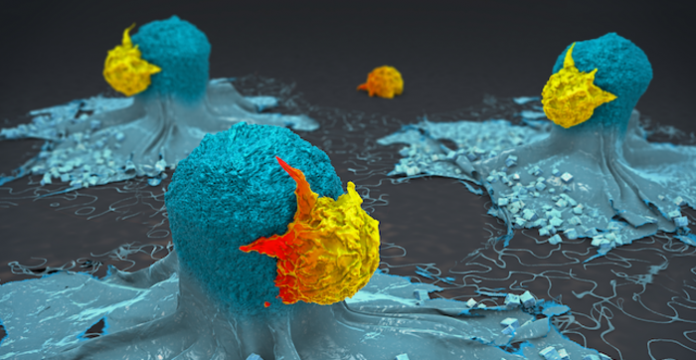
A new study from researchers at the Karolinska Institute and the Astrid Lindgren Children’s Hospital in Sweden, has uncovered new details how children’s immune systems respond to various types of cancer based on their age. The study, published in Cell, provides critical insights into the systemic immunity of pediatric cancer patients, with implications for the development of immunotherapies tailored to children.
Immunotherapy, which leverages the body’s immune system to target cancer cells, represents a promising avenue for innovation. However, the limited success of these therapies in pediatric populations underscores the need for a deeper understanding of how children’s developing immune systems interact with tumors.
The study involved a cohort of 191 children aged 0–18 years, diagnosed with various solid tumors, including neuroblastoma, Wilms tumors, and Hodgkin’s lymphoma. The researchers aimed to unravel the complexities of pediatric immune responses, to inform the development of tailored therapeutic approaches.
Age and tumor type influence immunity
One of the study’s pivotal findings is the significant variation in systemic immunity based on age and tumor type. Unlike adults, children’s tumors often present with fewer mutations and less inflammation, potentially leading to a subdued immune response.
“That means they likely appear less foreign to the immune system and that the immune system, therefore, doesn’t attack the tumors as forcefully,” said co-senior author Petter Brodin, professor of pediatric immunology, Karolinska Institute, and pediatrician at the Astrid Lindgren Children’s Hospital. “Having said this, there are large individual variations, which underlines the importance of precision medicine, which is to say the adapting of treatment to individual patients. Our study shows how this can be done in practice.”
This discovery underscores the importance of age-specific strategies in treating pediatric cancer. The immune system’s maturity plays a crucial role in its ability to recognize and attack tumor cells.
The researchers also learned more about the correlation between tumor mutation rates and immune cell infiltration. While pediatric tumors generally exhibit a lower tumor mutation burden (TMB) compared to adult tumors, some cases show high mutation rates. Notably, in neuroblastoma and Wilms tumors, a higher TMB is linked to increased CD8+ T cell infiltration, suggesting a connection between these features in pediatric cancers.
Challenges in clonal expansion and unprimed immune systems
Clonal expansion of T cells is a critical aspect of effective anti-tumor immunity. The study reveals that such expanded T-cell responses are rare in children at diagnosis but can be elicited during treatment. This finding opens the door to potential therapeutic interventions that could enhance these responses, offering hope for more effective treatments.
The study also provides insights into why current immunotherapies, like checkpoint inhibitors, have shown limited success in children. These therapies rely on pre-activated immune cells to be effective, yet the study indicates that children’s immune systems are often not initially primed against tumors.
This suggests a need for alternative strategies that focus on triggering immune responses from the outset rather than merely unleashing existing ones.
Implications for precision medicine
This research integrates systems-level immunomonitoring with traditional genomic analyses, introducing a new dimension to precision medicine in pediatric oncology. It emphasizes the potential for personalized treatments that consider both the tumor’s characteristics and the child’s unique immune profile.
Their research also suggests other applications for these new findings. “We show that specific groups of tumors elicit more similar systemic immune responses, which could guide novel diagnostic tests, biomarkers for monitoring, and the sharing of treatment protocols across such cancers,” the authors wrote.









![Best Weight Loss Supplements [2022-23] New Reports!](https://technologytangle.com/wp-content/uploads/2022/12/p1-1170962-1670840878.png)




